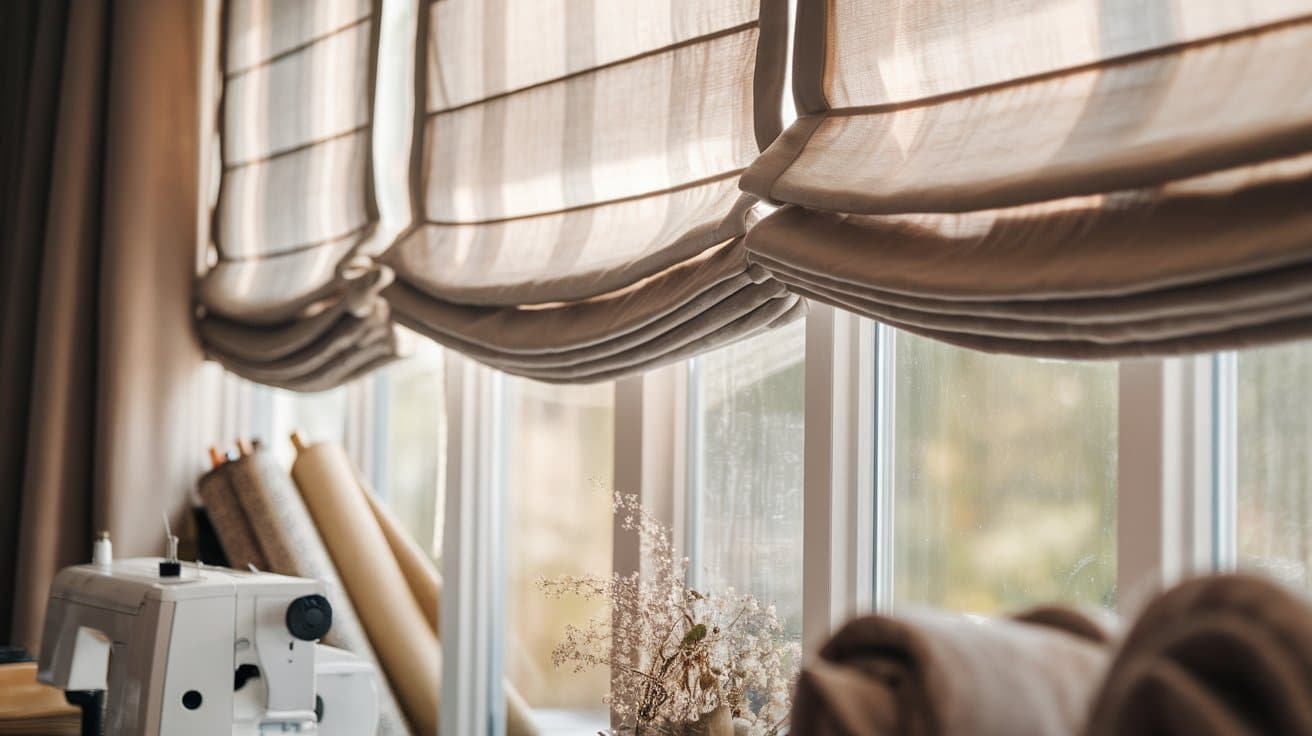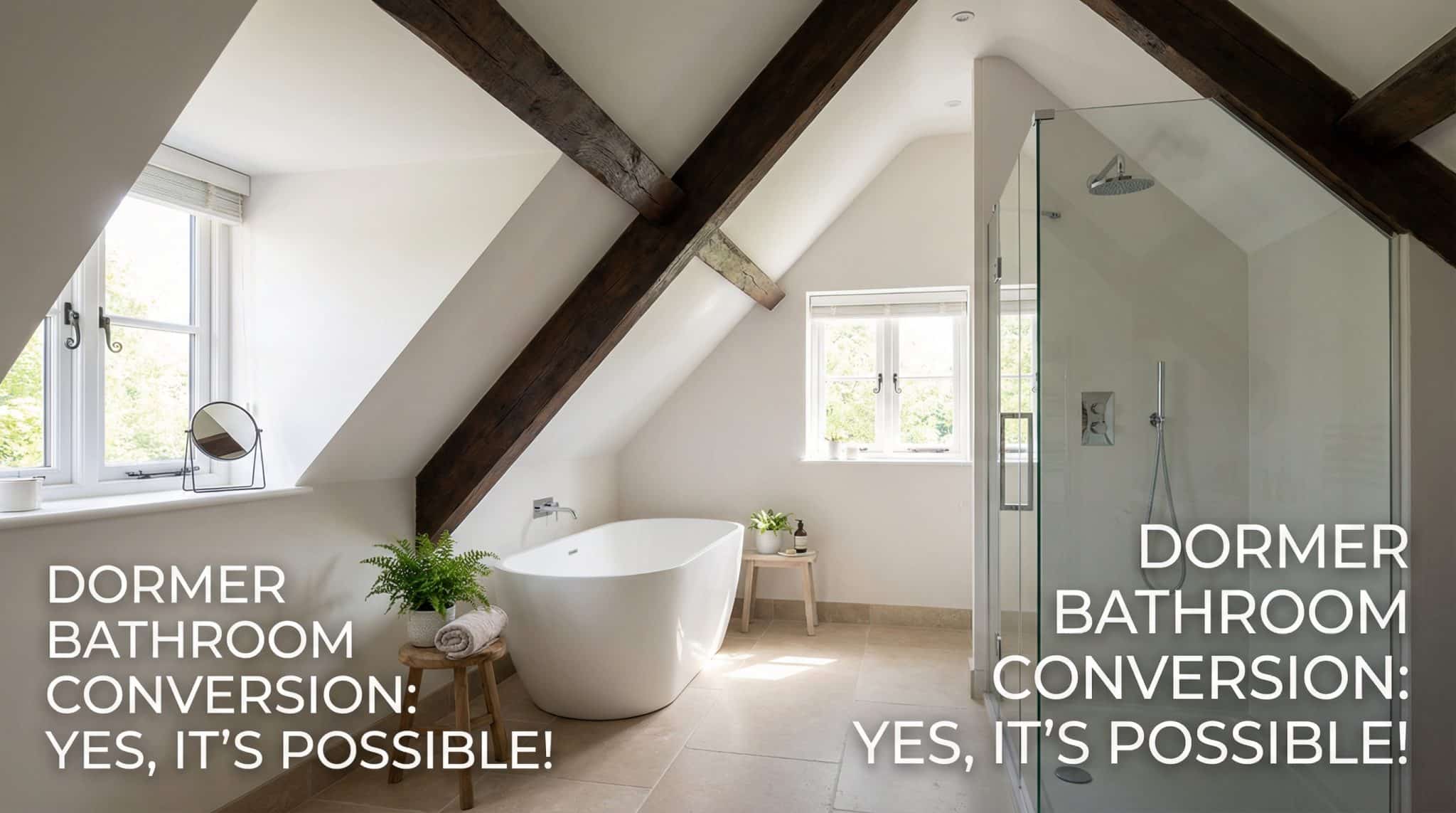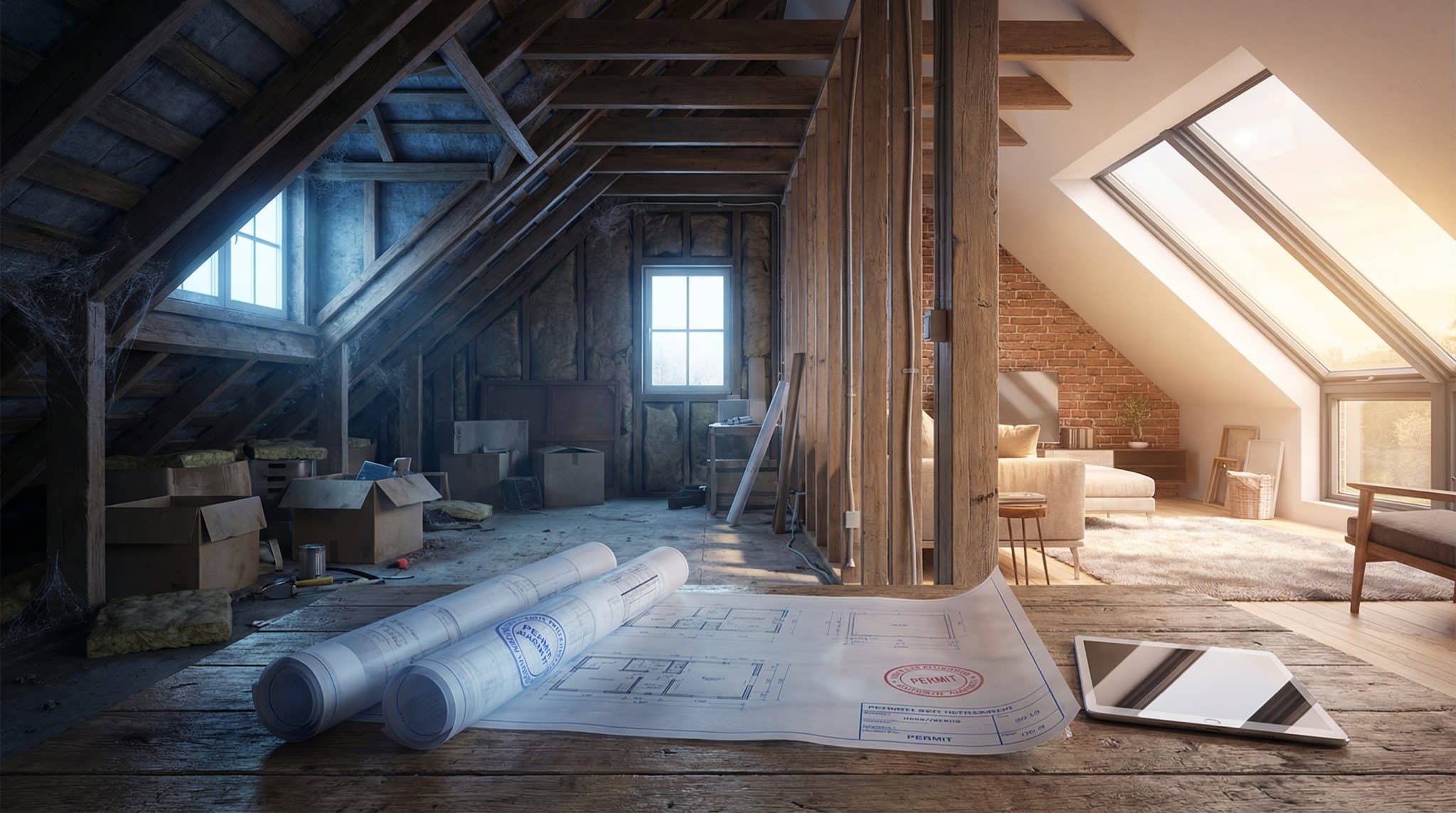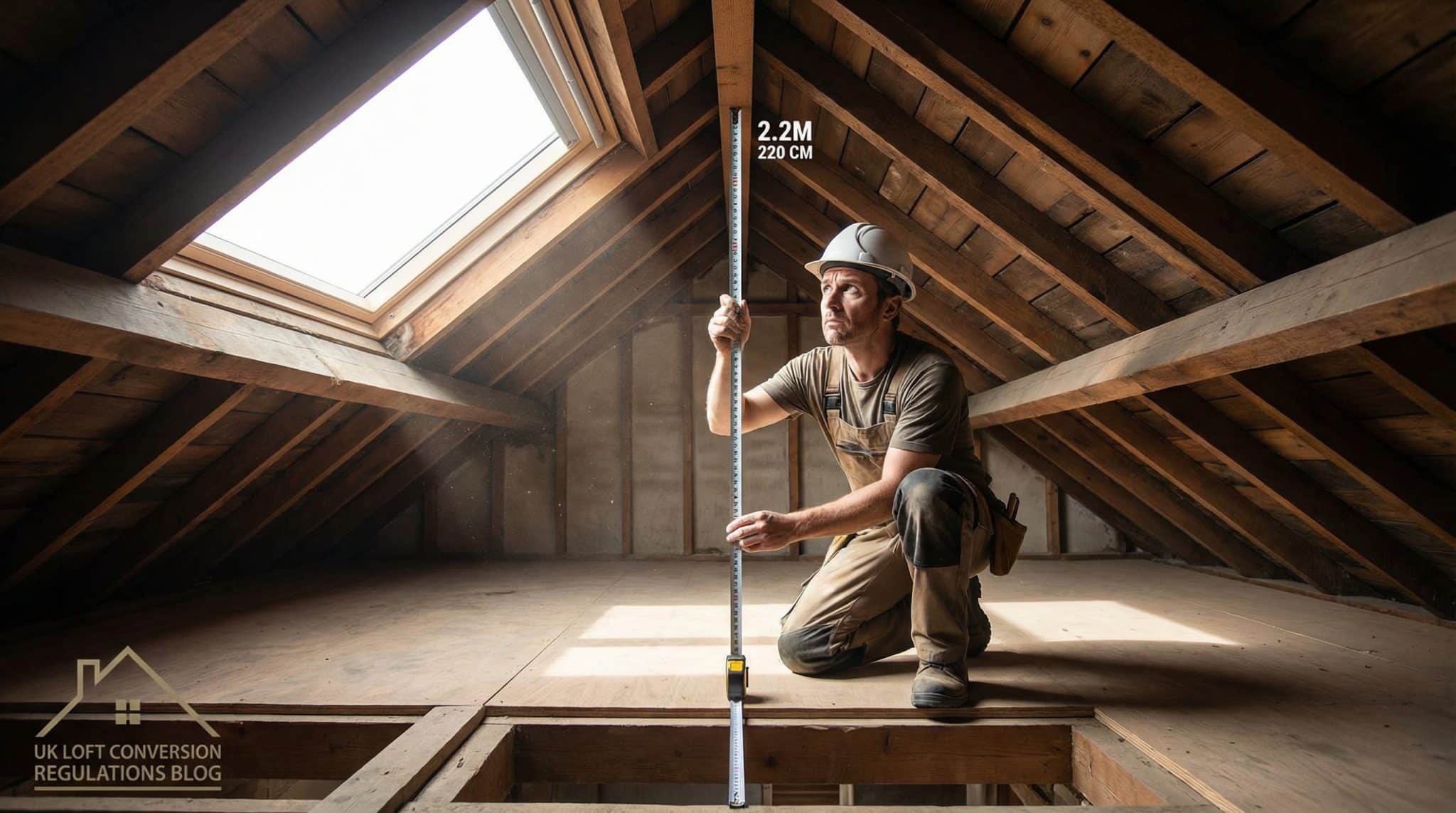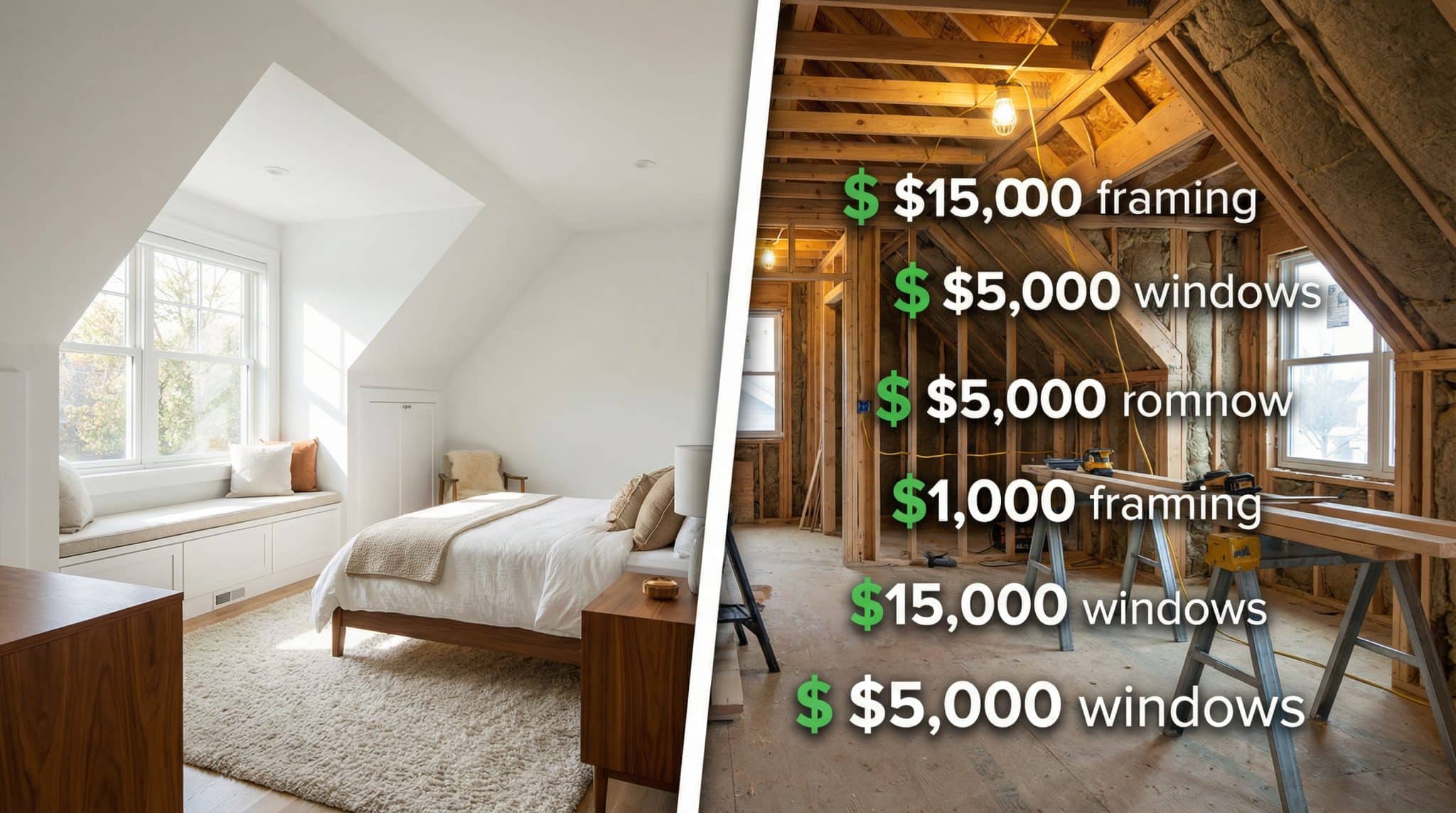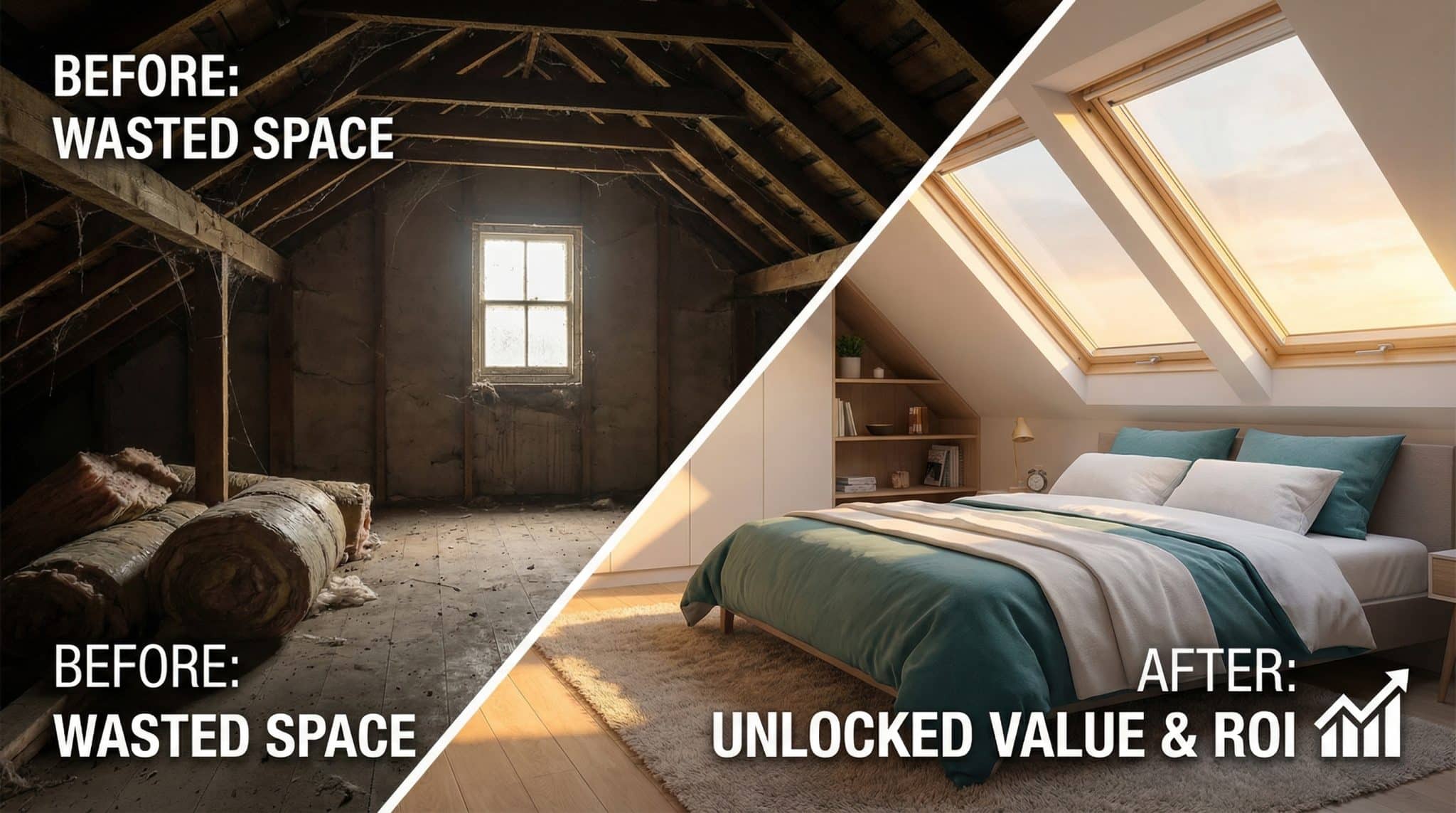Ever wondered how much money you could save by making your window treatments? Roman blinds offer timeless style and practical light control for any room in your home.
Store-bought options often cost hundreds of dollars per window. Making them yourself cuts expenses significantly while letting you choose exact colors, patterns, and fabric quality that match your vision.
This complete guide walks you through every step of creating high-end, custom Roman blinds from scratch.
You’ll learn accurate measuring techniques, innovative fabric selection tips, and detailed assembly methods for a successful outcome. The process requires basic sewing skills but yields beautiful results.
By the end of this blog, you’ll have gorgeous custom blinds that fit your windows perfectly and complement your home’s unique style beautifully.
What Are Roman Blinds?
Roman blinds are flat window coverings that fold into neat horizontal pleats when raised. They create clean lines and work well in both traditional and modern spaces. These blinds offer a refined window treatment option that combines functionality with style.
These blinds differ from venetian or vertical styles because they use fabric instead of slats. The fabric attaches to a mounting board at the top of the window frame. This design creates a smooth, uninterrupted surface when the blind is fully lowered.
Each style offers a distinct look, suited to your room’s specific needs. Flat romans work best for modern spaces, while relaxed versions suit casual settings. The choice depends on your personal style and the room’s overall design theme.
Key Features
- Flat panel design when fully extended
- Horizontal fold pattern when lifted
- Cord system controls raising and lowering
Common Styles Include
- Flat Roman (smooth surface)
- Relaxed Roman (gentle curves)
- Balloon Roman (puffy bottom section)
Step-By-Step Guide to Making Roman Blinds
This section provides detailed instructions for creating professional Roman blinds using proven techniques. Carefully following each step ensures smooth operation and a refined, tailored look.
What You’ll Need to Make Roman Blinds?
Gathering all materials before starting prevents interruptions during the sewing process. This tutorial employs proven methods to achieve clean, polished results using basic supplies.
| Category | Items Needed | Purpose |
|---|---|---|
| Fabric & Lining | Main drapery fabric, coordinating lining fabric, matching thread | Creates a blind structure and light control |
| Hardware | 1×2 or 2×1 lumber board, metal rings (3 per dowel), eye hooks, pull cord | Provides mounting and operating system |
| Reinforcement | Thin wooden dowels, metal bottom rod, stitch witchery | Maintains shape and adds weight |
| Tools | Sewing machine, measuring tape, fabric scissors, and a drill with bits | Assembly and installation equipment |
| Fasteners | Wood screws (for window mounting), staple gun with staples | Secures blind to the mounting board and window |
| Finishing | Iron, needles, pins, and a fabric marker | Professional appearance and precise placement |
Step 1: Measure and Cut Fabric & Lining

Add 3 inches to your window width measurement for the main fabric. Include at least 5 inches of extra length to accommodate hems and mounting needs.
Cut your lining fabric 1 inch narrower than the window width. Keep the lining length identical to your main fabric measurement for precise alignment.
Bonus Tip – Iron both fabrics before cutting to remove wrinkles and ensure neat, straight edges throughout your project.
Step 2: Sew the Side Edges

Place your main fabric face down on the work surface. Position the lining on top with the right side facing up toward you.
Align one edge of the lining with the fabric edge. Pin carefully along this side, then sew with a 1/2 inch seam allowance using matching thread.
Pull the lining to the opposite side and align those edges. Pin and sew the second side using the same seam allowance technique.
Bonus Tip – The lining may seem slightly shorter during this step; this is normal and helps create a clean border finish.
Step 3: Center Lining and Create Fabric Borders

Turn your blind right side out so the main fabric shows on both sides. Center the lining panel to create equal fabric borders on each side.
Pull the lining into position so it sits evenly between the sewn side seams. This creates attractive fabric edges that frame your blind nicely.
Sew across the bottom edge with a 1/2 inch seam allowance. This secures the lining position and creates the bottom hem pocket for the rod.
Bonus Tip – Take time to measure and adjust the lining position carefully; this step is key to achieving a clean, symmetrical finish.
Step 4: Calculate Dowel Spacing for Proper Folds

Plan for 8-10 inch spacing between dowels for standard-sized blinds. Longer blinds may need 12-13 inch spacing for better proportions and fold appearance.
Calculate the bottom spacing by dividing the distance between the bottom seam and the first dowel in half, then add 1 inch for visual balance.
Keep the top spacing slightly larger than the middle sections for the most balanced and attractive folds.
Bonus Tip – Odd numbers of sections typically look more balanced than even numbers when the blind is partially raised.
Step 5: Create Dowel Pockets from Lining Scraps

Cut 4-inch-wide strips from your lining fabric. Make them the full width of your blind for each dowel position needed in your design.
Fold each strip in half lengthwise and iron to create sharp creases. Sew along the open edge with a 3/4 inch seam allowance for durability.
Trim excess fabric close to the seam line for neat results. These pockets will hold your dowels and create the fold structure.
Bonus Tip – Use stitch witchery or fabric glue to attach pockets temporarily before final sewing for perfect placement every time.
Step 6: Attach Dowel Pockets Using Heat Method

Position each pocket on your marked lines on the lining side. Use stitch witchery strips to secure pockets before permanent attachment.
Apply heat with your iron without touching the fabric directly. Keep the iron slightly elevated and move it gently over the stitchery areas.
Allow the bond to cool completely before handling. This creates a strong temporary hold for accurate sewing placement later.
Bonus Tip – Work on an ironing board and keep the iron moving to prevent scorching your fabric or melting the adhesive strips.
Step 7: Insert Dowels and Attach Metal Rings

Cut dowels 1 inch shorter than your finished blind width to prevent binding during operation. Slide each dowel carefully into its designated pocket.
Sew three metal rings to each dowel pocket by hand. Position one ring in the center and one near each end for balanced cord distribution.
Use strong thread and multiple stitches through the top layer only. Keep rings aligned vertically across all dowel rows for smooth cord threading.
Bonus Tip – Mark ring positions with pins first to ensure perfect alignment, and follow any fabric patterns to keep rings visually straight.
Step 8: Install Bottom Rod and Secure Edges

Slide the metal bottom rod through the hem pocket you created earlier. This rod adds the needed weight for smooth and reliable blind operation.
Hand-stitch the corner openings closed to prevent the rod from sliding out during use. Use small, neat stitches that won’t show from the front.
Check that the blind hangs evenly and the bottom edge stays straight. Adjust the rod position if needed before finalizing the corner stitches.
Bonus Tip – Choose a rod that won’t rust or leave stains on your fabric, especially if the blind will be in a humid environment.
Step 9: Prepare Mounting Board with Hardware

Cut your 1×2 lumber to match your blind width exactly. Sand smooth and apply paint or stain to coordinate with your window trim.
Mark positions for eye hooks along the bottom edge of the board. Position them to align with the vertical ring columns to maintain clean and even cord routing.
Drill pilot holes slightly smaller than your eye hook threads. Install eye hooks by hand, ensuring they all face the same direction for cord management.
Bonus Tip – Add one extra eye hook near your chosen cord side to route all cords together for easier operation and cleaner appearance.
Step 10: Install Blind and Thread Operating Cords

Securely staple the top edge of your blind to the mounting board. Space staples every few inches and ensure the blind hangs straight.
Cut cord lengths equal to twice the blind height plus the blind width. Thread each cord up through all rings in its column, then through the corresponding eye hooks.
Route all cords to your chosen operating side and tie them together at equal lengths. Install the mounting board in your window frame using appropriate screws.
Bonus Tip – Train your blind by raising and lowering it several times initially to establish proper fold patterns and smooth operation.
Video Tutorial
Check out the video that inspired this blog for more insights! Watch a step-by-step demonstration of how to make Roman blinds.
By – Lucy Cuneo
Common Mistakes to Avoid when Making Roman Blinds
Understanding typical errors helps you create better Roman blinds on your first attempt. These mistakes can affect both appearance and function.
- Poor measurements lead to ill-fitting blinds: Always measure twice and cut once. Double-check the width and height before cutting expensive fabric.
- Skipping the lining creates problems: Lining provides body, blocks light better, and protects the main fabric from sun damage over time.
- Uneven ring spacing can cause binding: Measure carefully and mark the ring positions before sewing. Misaligned rings prevent smooth operation.
- Wrong fabric choice affects durability: Avoid stretchy materials that lose shape quickly. Stick with stable weaves that maintain their structure.
- Inadequate cord management creates safety hazards: Always install cord cleats and keep cords out of reach of children and pets.
- Rushing the pressing steps shows in the final product: Take time to iron seams and press folds properly for professional-looking results.
- Ignoring weight distribution can cause sagging: Ensure the bottom rod provides adequate weight and that the dowels are positioned correctly throughout the blind.
How Do You Maintain and Style Roman Blinds?
Proper care extends the life of your handmade Roman blinds while keeping them looking fresh. Regular maintenance prevents major problems and preserves your investment.
Weekly dusting with a soft brush keeps fabric clean. Monthly vacuuming on both sides effectively removes deeper dirt.
- Dust weekly with a soft brush attachment
- Vacuum monthly on the low suction setting
- Spot clean stains immediately with mild soap
Deep Cleaning Methods:
Remove blinds for thorough cleaning when needed. Hand wash in cool water with gentle detergent to protect fabric integrity.
Steam cleaning refreshes blinds without removal. Use handheld steamers on low heat to avoid damage.
| Method | Frequency | Time |
|---|---|---|
| Dusting | Weekly | 5 minutes |
| Vacuuming | Monthly | 15 minutes |
| Hand Washing | Seasonally | 2 hours |
Styling Options:
- Layer with curtain panels for a formal appearance.
- Select hardware finishes that complement the room’s existing metals.
- Add decorative trim to the bottom edges for personality.
- Keep additions simple to maintain clean lines.
- Switch colors seasonally for a room refresh.
- Store extra blinds rolled around tubes to prevent creasing.
Care Tip – Rotate blinds occasionally to prevent uneven fading and address cord wear immediately for safety.
Final Thoughts
Making roman blinds yourself opens up design possibilities that store-bought options simply cannot match. You control every detail from fabric selection to final installation.
The time investment pays off in both money saved and skills gained. Most people find the process enjoyable and less difficult than expected.
Your custom blinds will fit perfectly and reflect your personal style preferences. No more settling for close-enough sizes or limited color choices.
The techniques you learn here can also be applied to other home projects. Measuring, sewing, and installing skills transfer to many DIY endeavors.
What aspect of making Roman blinds interests you most – the cost savings or creative control? Share your thoughts or questions in the comments below. We’d love to hear about your window treatment projects!
Frequently Asked Questions
How Many Folds Should a Roman Blind Have?
Blind length determines fold count. Blinds up to 24 inches require 2.5 folds, 36 inches require 3.5 folds, and 48 inches require 4.5 folds for a proper appearance.
Should a Roman Blind Sit on The Window Sill?
Inside-mount blinds create a neater appearance and preserve window sills. However, they allow less light into rooms when open compared to outside-mount installation options.
Should Blind Slats Face Up or Down?
Tilting slats upward during the day reduces UV damage and reflects heat outside. This keeps south-facing rooms cooler while significantly lowering energy costs.
